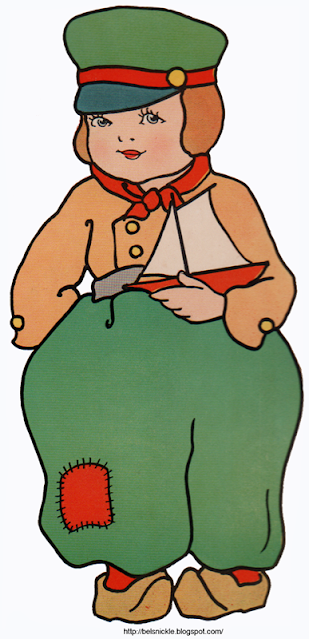 |
| Click to download the largest available size. This Dutch cousin holds a bouquet of flowers and her white apron is trimmed with a ribbon of polka-dots. |
Either trace the outside lines on transparent paper and transfer to wood, jig-saw out and color yourself, or print and cut figures out, lepage or paste them on wood and saw out. Use plywood, Presdwood or other thin wood 1/4 inch to 3/8 thick. Dado one end of base to hold cut-out and put gradual bevel on other end with belt or drum sander. Lepage upright to base.
More Ideas for a Dutch/Swiss Christmas:
- Build this absolutely adorable Alpine playhouse for a special Christmas project.
- Build vintage with this Pennsylvania Dutch hutch cabinet.
- The Swiss dollhouse chalet would please any little girl if found under the Christmas tree.
- Little Dutch girl costume by Enchanted Kingdom Creations
- Wonderful Kathe Kruse Dolls
- 10 Must Try Recipes for a Dutch Christmas
- Try some botersprits for Christmas!
- Dutch canal house patterns for gingerbread
- Friends Around the World paper dolls
- 15 of the most gorgeous printable holiday crafts for kids and families.
- Free-standing, paper Christmas decorations by Sheridan Quigley
- Pennsylvania Dutch miniature cupboard
- Antique and Vintage Doorstops pinboard
- DIY Elephant Doorstop
- Fabric Door Stops
- A dog doorstop to sew for your home
 |
| Little Dutch cousin holds a wooden sailboat toy. He wears wooden clogs and has a patch on his pants |
 |
| "Dado one end of base to hold cut-out and put gradual bevel on other end with belt or drum sander. Lepage upright to base." |




















